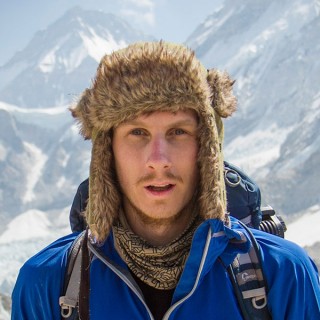Being at sea poses a lot of challenges for a science team – the first of which is “Do you have everything you need?” Keeping in mind there are no shopping, stores, or deliveries for the next month, we asked the science team to pick one item that they need for their work – or that simply keeps them going – on a packed 30-day expedition to explore the deep ocean.
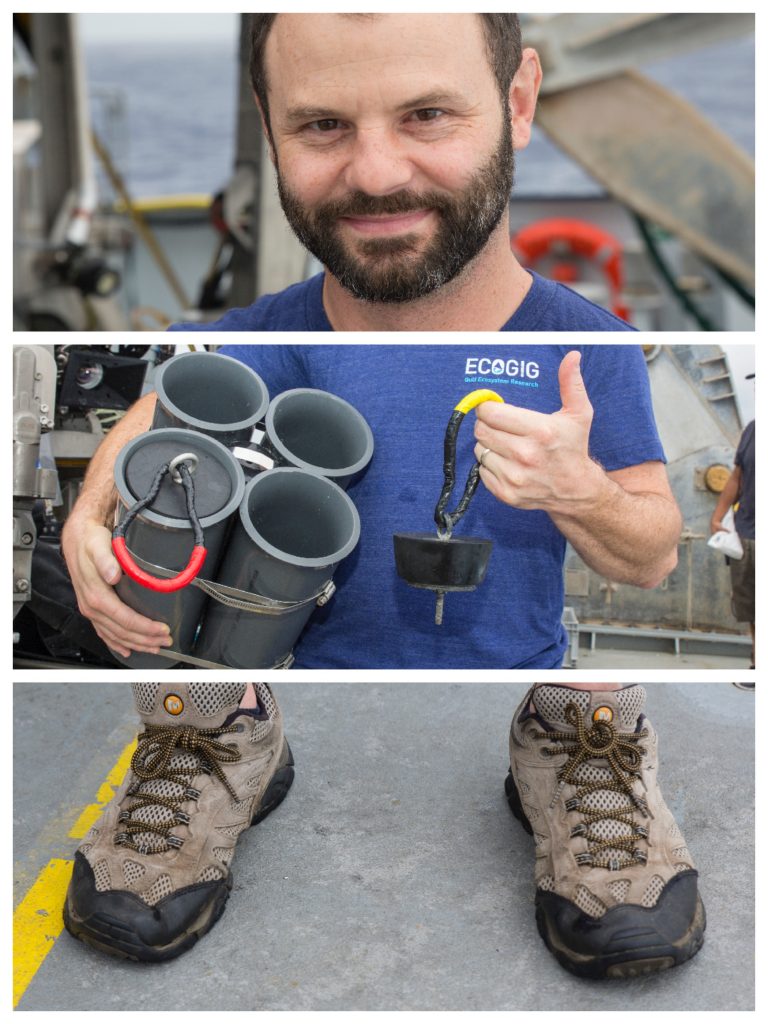
Erik Cordes is a deep sea biologist and the Principle Investigator on board, he modified this quiver and intermediate stopper system back on land to help collect samples more effectively. The ROV pilots will carefully collect and place a sample in the bottom of the quiver; then by adding an intermediate stopper we will be able to take a second coral sample on top too. Once the final stopper is added it preserves the samples in a cool state with water from the deep ensuring the least amount of degradation as they embark on the long journey back to the ship.
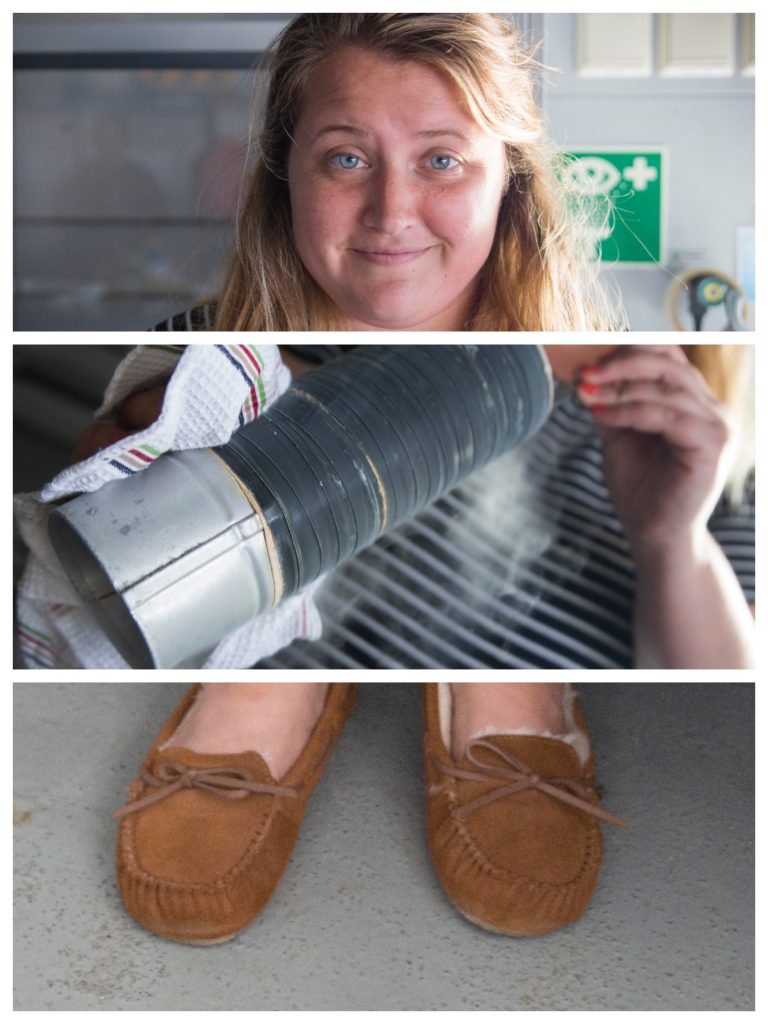
Alexis Weinnig has to have her long metal forceps and liquid nitrogen nearby at all times. As soon as samples come up with ROV SuBastian, the team races to prepare these precious samples right away. One essential preservation technique is flash freezing, as liquid nitrogen is a great way to preserve live genetic material. Many researchers will want to use the data collected from these extremely rare samples so it is vital we do not lose any of the secrets they contain.
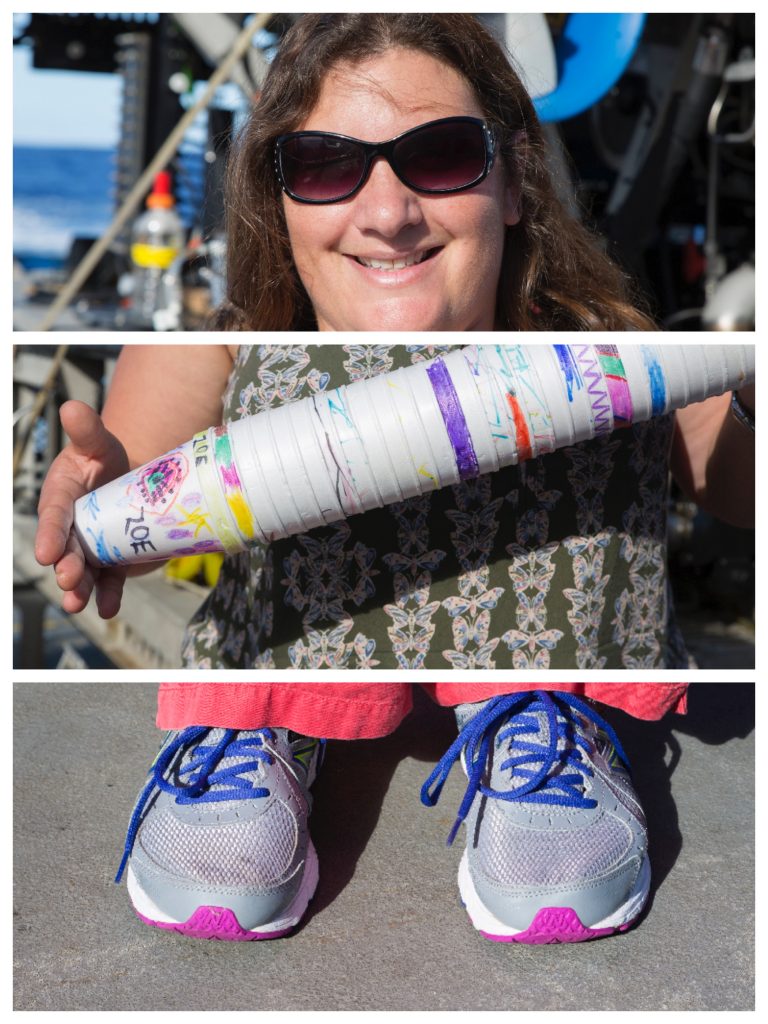
Randi Rotjan is a researcher focusing on ecology and conservation biology. This cruise she is working to ecologically characterize the deep sea seamounts, looking for unique features of this remote area including how surface and shallow dynamics influence deep-sea ecology. Randi is Chief Scientist of the Phoenix Islands Protected Area Conservation Trust, but also finds time to engage the next generation with ocean science. Visiting the deep water of PIPA provides a unique opportunity to teach kids about ocean science. Lots of school children have drawn on these styrofoam cups which get put in a net and taken down to the deep ocean. The pressure down there gets so enormous that the polystyrene shrinks to a fraction of it’s original size. It is a cool experiment that leaves behind a tiny, unique memento to bring home for the kids, as well as a long-term connection to the magical properties of the deep sea.
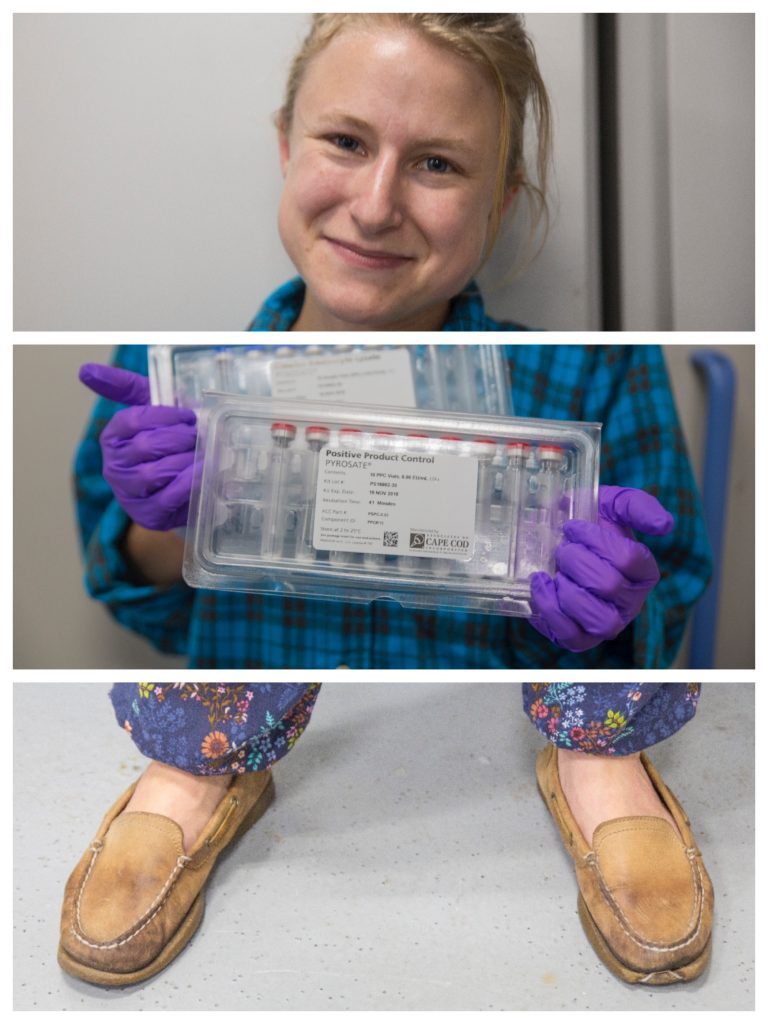
Anna Gauthier is our on board microbe specialist. She will be using these assays to detect gram negative bacteria in our deep water samples. Anna’s research utilizes molecular biology to interrogate how the immune systems of aquatic animals interact with their surrounding microbial environment to promote host repair and defense. The microbial environment of the deep ocean is still a big mystery, but these organisms are thought to be some of the earliest to have evolved on earth. It is a challenge to get at them, but we really want to understand what they are and how they work, as these tiny characters have a huge role in the story of our oceans.
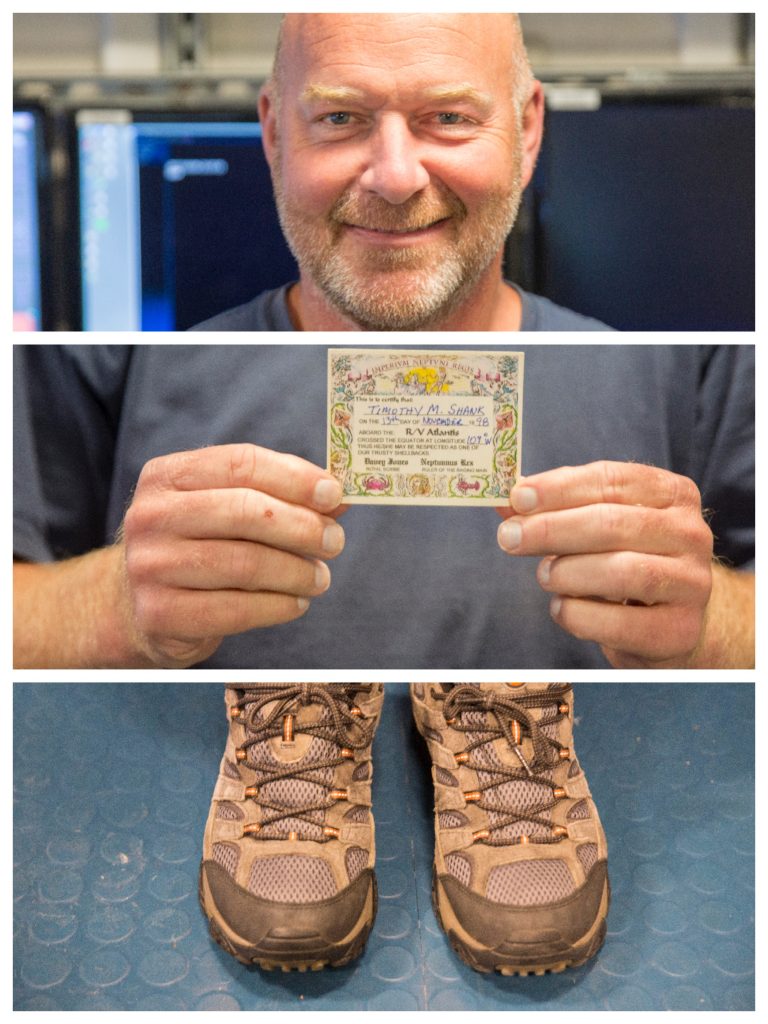
Tim Shank is a deep sea biologist, with over 60 scientific cruises across the world under his belt. His special item is this permit – proof that he has crossed the equator before and does not need the initiation that some on board will get this week! He is hugely experienced in deep ocean work, but this cruise offers something unique. His main interest is in the geographic and genetic connection of corals and the organisms that live around them he’s excited by the new discoveries that working in the Phoenix islands protected area will surely bring.
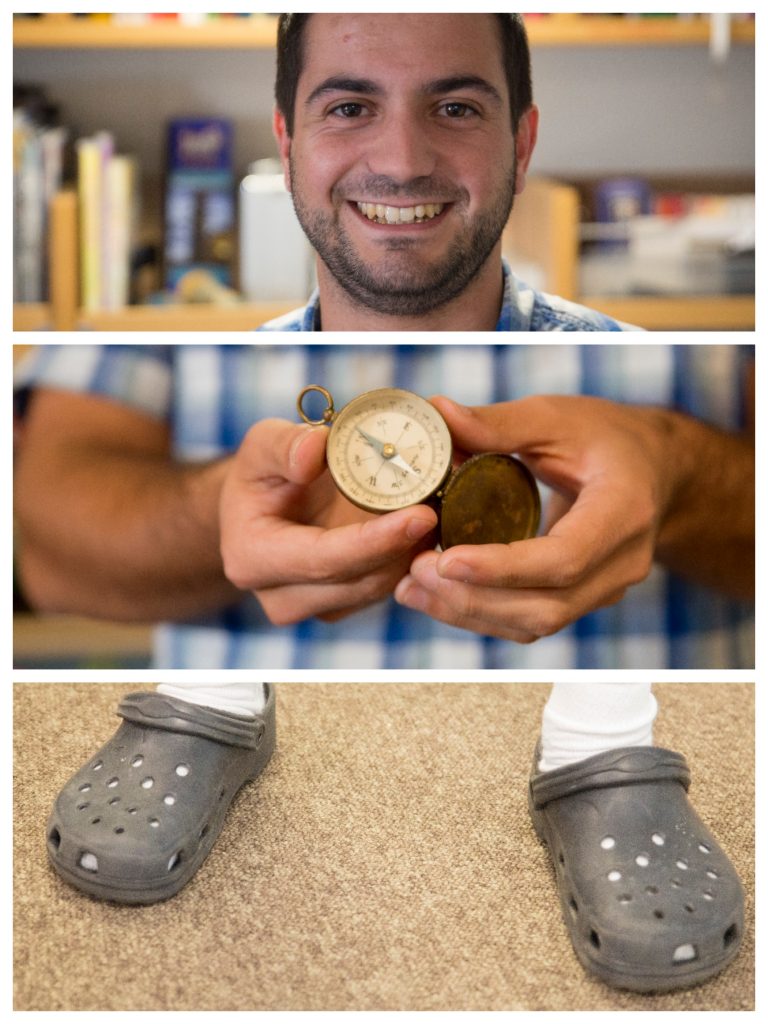
Luke McCartin’s main job on board involves reviewing the live video feed coming into the ship during ROV dives. He has to be very vigilant to identify different species of animal, whilst logging interesting behaviours, and interactions. Laptops were banned from this photo project, so he picked this compass he got from his adventurer Grandad who passed away recently. It is Luke’s first time on a research vessel and we are visiting some of the most remote parts of the planet, so it seems apt to have a sentimental compass to keep a direct link home.
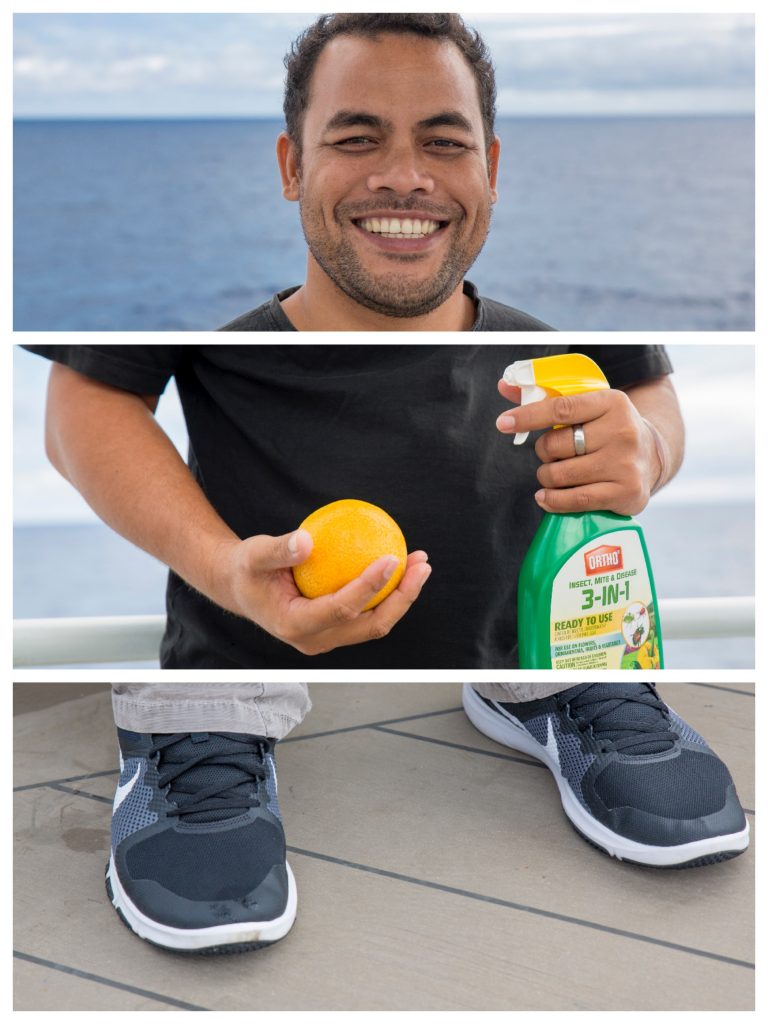
Aranteiti Tekiau (Teiti) is our onboard observer, member of the PIPA Scientific Advisory Committee, and a native of the Republic of Kiribati. One of his roles on the ship is being in charge of biosecurity. Remote ecosystems like those around the Phoenix islands are incredibly sensitive, and it is crucial that we have a minimal impact. We will be visiting the island of Kanton and it is essential that – as outsiders – we do not bring any bugs, pests, soil or anything that could cause contamination. Teiti is armed with pest spray to ensure we all have a minimal footprint on this stunning natural environment.
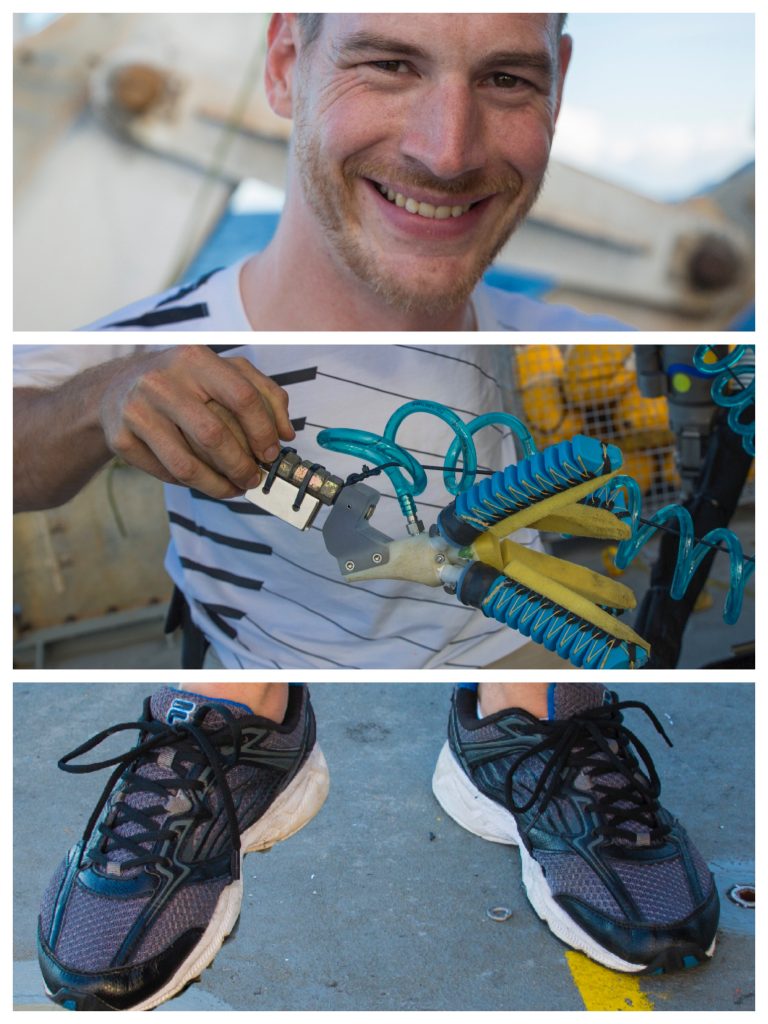
Daniel Vogt is our specialist engineer, and he has a 3D printer on board to make any additional parts the team might need at sea. An exciting project he is working on involves soft robotics, seen here in the form of ‘squishy fingers.’ A big challenge for deep ocean science is that many of the tools were designed with oil and gas industries in mind – far more industrial applications than collecting delicate corals and animal samples. Soft robotics have been inspired by the way animals move elegantly around the natural world, and Daniel can 3D print new types of squishy fingers on the fly if we come across an unusual sampling challenge. Daniel hopes that we will be able to get some really great samples via delicate interactions with the unique critters of the deep.
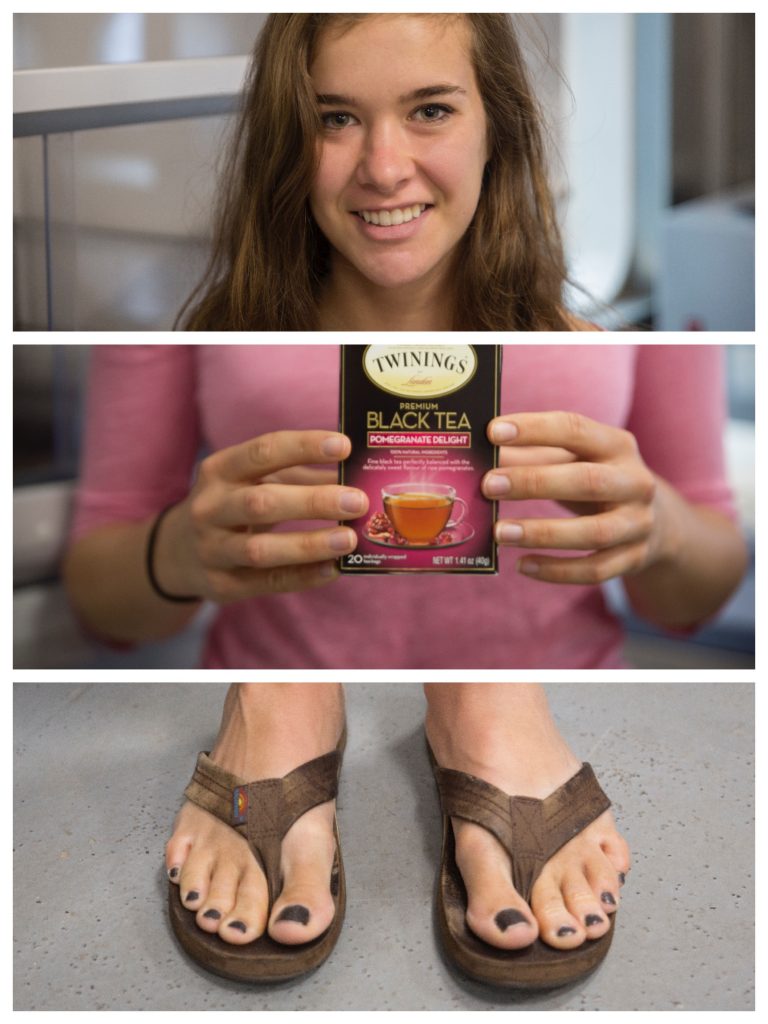
Abby Keller is a laboratory student back on land, but a lab at sea is a new challenge. Out here, her focus is collecting water samples and reviewing and logging the dive footage. On this cruise we will be doing some really long dives with the ROV. The science team will sometimes be working in shifts across 24 hours, meaning sometimes they will need a caffeine boost to power through early mornings and late nights!
